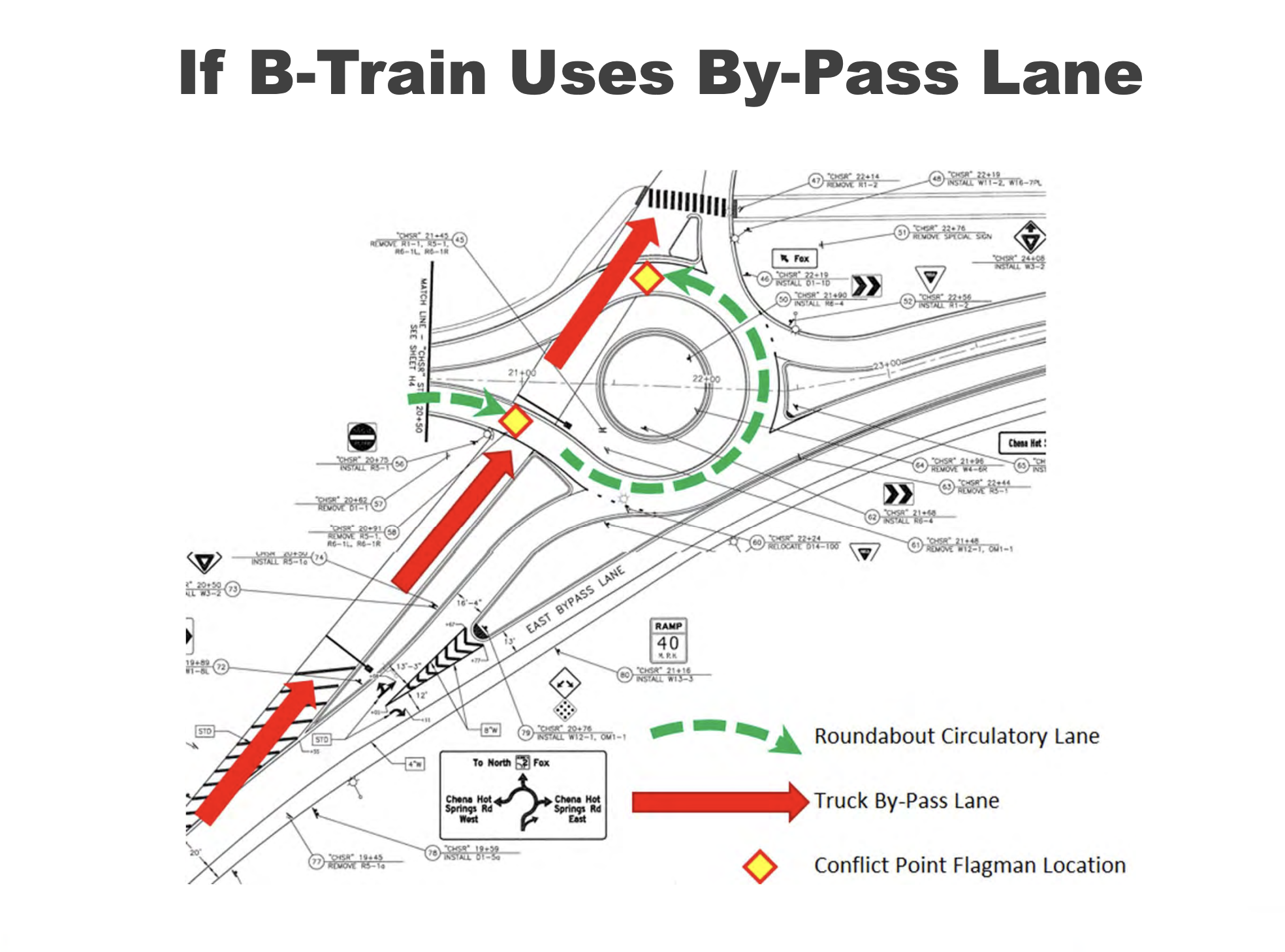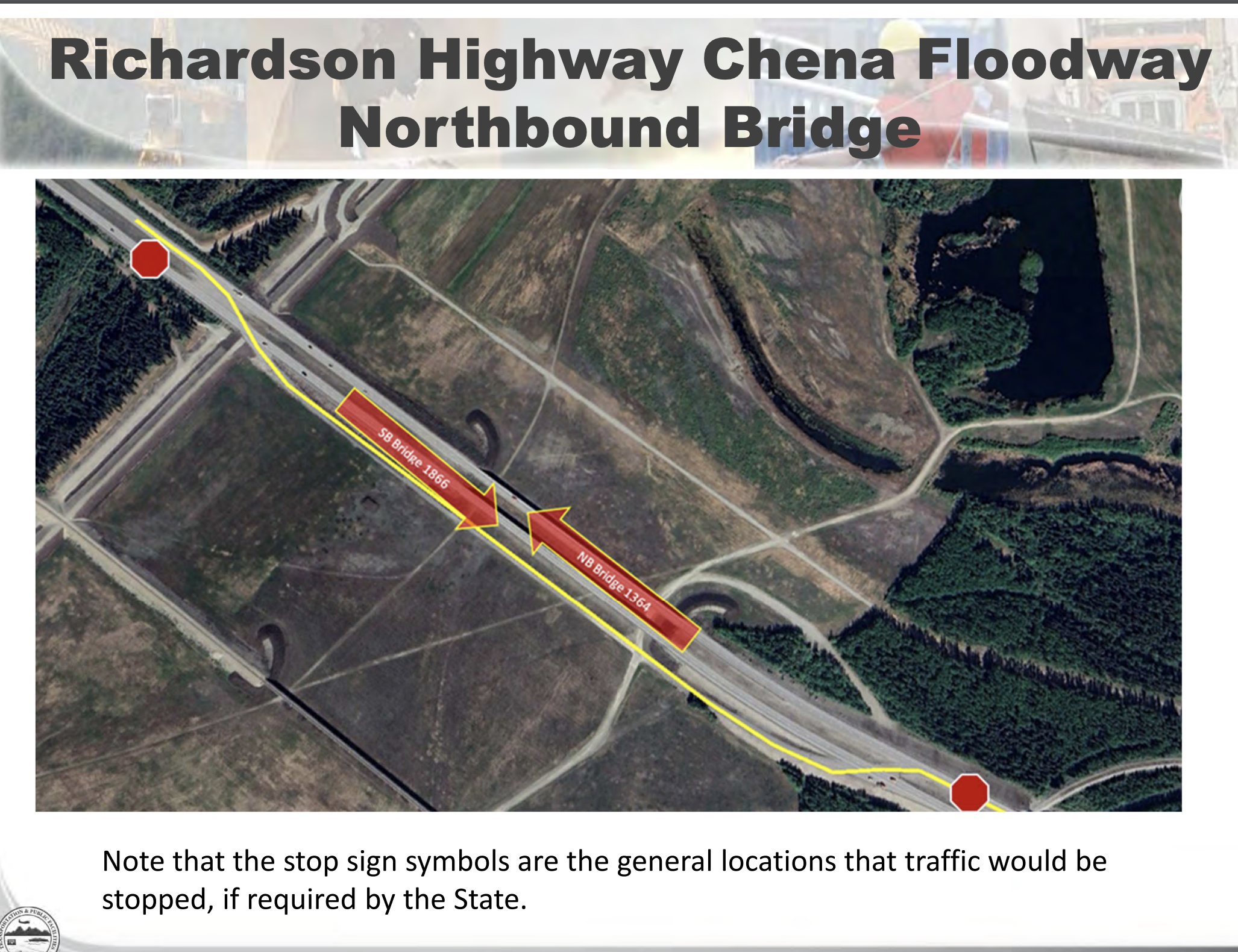Now we find out that 2 Fairbanks bridges can't handle fully-loaded Kinross trucks
The Steese Highway bridge over Chena Hot Springs Road and the Richardson Highway bridge over the Chena flood control area in North Pole don’t have the capacity to handle the Kinross mining trucks with full loads.
The Dunleavy administration, headed by the guy who wants Alaskans to “say yes to everything”—has been grossly negligent in withholding this information from the public until now.
As of last month the state was claiming on its website that the bridges could handle the trucks proposed for the Tetlin-Fort Knox route, as noted in the FAQ about the Tetlin mine hauling plan.
From the state FAQ about the Manh Choh project that was on the state DOTPF website last month.
Our local governments and our legislators have either looked the other way or opted to do as little as possible for months, allowing the Department of Transportation and Public Facilities to continue to be subservient to the Canadian mining company, hiding information or failing to ask obvious questions.
Dunleavy has made it clear to the employees of the transportation department that he wants them to say “yes” and support the Kinross plan to turn a significant piece of our highway system into industrial roads. It is a high profit venture for the company.
“There’s too much ‘no,’” according to Dunleavy. “No trucks on the road from Tetlin to Fort Knox . . .”
In late July, a state consultant posted details of how the Steese bridge at Chena Hot Springs and the Richardson bridge over the Chena floodway in North Pole can not handle full loads for the mining venture.
There are bypass routes to get over the floodway without using the bridge and to get across Chena Hot Springs Road without using the Steese bridge.
Both of those bypass routes come with problems, however, problems that DOT Commissioner Ryan Anderson and his staff have consistently underplayed or denied the existence of.
In slides presented at a meeting July 26, Kinney Engineering described how the bridges can’t handle the Tetlin traffic if the trucks are fully loaded.
The slide below says the trucks will use the Steese off ramp at Chena Hot Springs Road and then the on ramp on the other side of Chena Hot Springs Road to avoid driving over the Steese bridge.
The bypass would require pilot cars and flagmen for each truck. But the consultant makes the dubious claim that the Kinross trucks will be able to navigate the roundabout, meaning no pilot car and no flagmen.
Anyone who travels that intersection a regular basis can verify that the trucks will not be able to navigate that roundabout, at least in the winter, because of the snow and the lack of room the graders have to operate.
The Dunleavy administration plans to replace the bridge, but it doesn’t appear a contract has been awarded and it’s not clear when the work would be complete.
Here is a slide presented July 26 to the Transportation Advisory Committee
“B-Train” is the jargon used for the Kinross mine trucks, which will weigh 165,000 pounds. This is the bypass lane next to the Steese Highway at Chena Hot Springs Road.
The bypass route in North Pole is far more problematic and presents a serious safety hazard for the public, one that the Department of Transportation and Public Facilities has failed to publicize.
The trucks would have to cross the median before the bridge, go across the southbound lanes of the Richardson, travel along the floodway below the bridge before going up on the other side, crossing the median and returning to the northbound lanes.
The Dunleavy administration says it plans to replace the northbound portion of the bridge, but a contract to do that has yet to be awarded and it’s not clear how much it will cost and when it will be built.
The fully loaded Kinross trucks will not be able to cross the Chena flood control bridge heading toward North Pole, according to this slide from the July 26 presentation, so they will have to dip down to the floodway.
Bypassing the Chena flood control bridge in North Pole is not a simple matter.
The slide below shows how the northbound truck traffic will go across the southbound lanes of the Richardson Highway. The consultant suggests that stop signs at either end of the bridge might work, “if required by the state.”
To suggest that stopping traffic comes with an “if” is absurd. Here again, pilot cars and flagmen may be needed. In any case, this is not a reasonable alternative on a high-speed road.
Kinross, which plans to start hauling some ore after September, is now suggesting that by cutting the gross weight of its trucks by 1 percent, the trucks will be permitted by the state to use the bridge and skip the bypass.
When I first heard this 1 percent assertion I thought it must have been a mistake.
A spokesman for DOTPF said Tuesday the state has not agreed formally or informally that a 1 percent load reduction would be safe. He said 1 percent was just cited as an example at the meeting of how close the loads are to the limit.
But that’s not what was said at the Aug. 3 meeting by Kinross and the state. Larry Owen, a state bridge management engineer, said Kinross trucks fully loaded would be “a hair over that limit,” meaning that the company could use the road by dipping just under the limit.
The Kinross trucks are supposed to have a gross weight of 82 tons, about 165,000 pounds. A 1 percent reduction is 1,650 pounds, the load of a small pickup truck. It could be one or two big rocks.
Under this notion, a truck weighing 163,350 pounds is safe, while a truck weighing 165,000 pounds is not. In the winter, one of those trucks could easily be hauling enough ice and mud and water to exceed 165,000 pounds.
The margin of safety needs to be more than 1 percent. Kinross will be weighing the trucks, not the state, and while the company has an incentive to push load limits as far as it can, the state is supposed to be looking out for the general public, regardless of how much pressure is applied by the yes man in the governor’s office.
Your contributions help support independent analysis and political commentary by Alaska reporter and author Dermot Cole. Thank you for reading and for your support. Either click here to use PayPal or send checks to: Dermot Cole, Box 10673, Fairbanks, AK 99710-0673.
\






